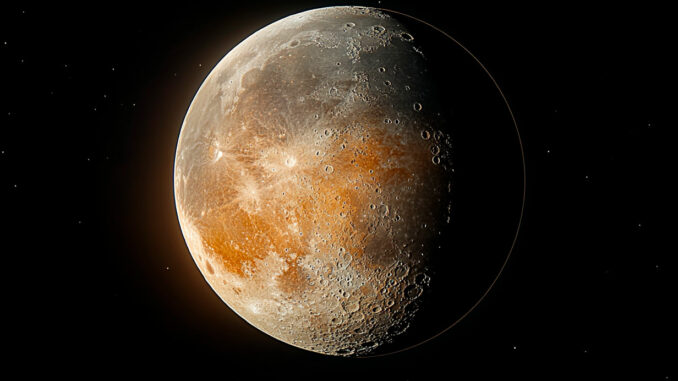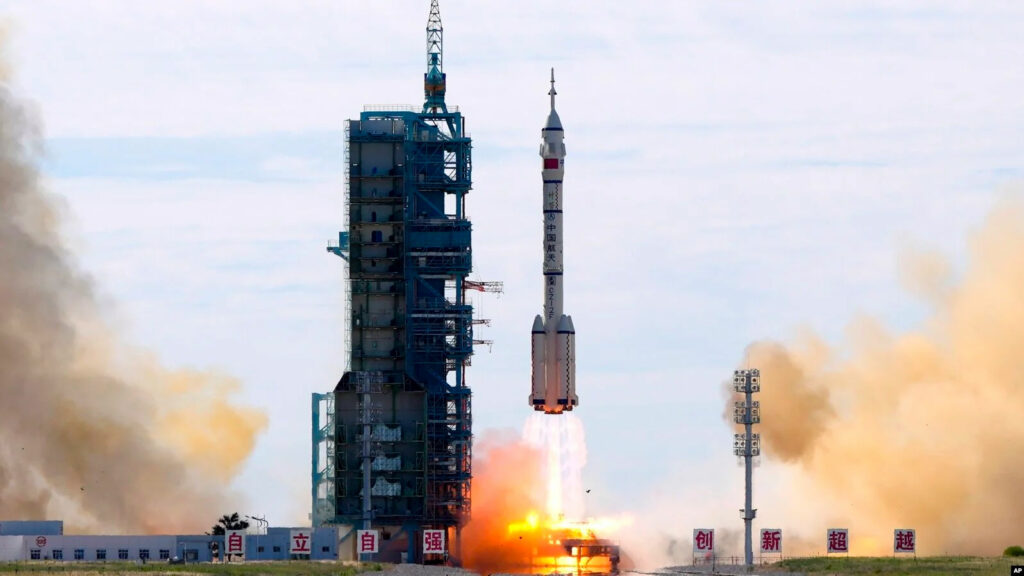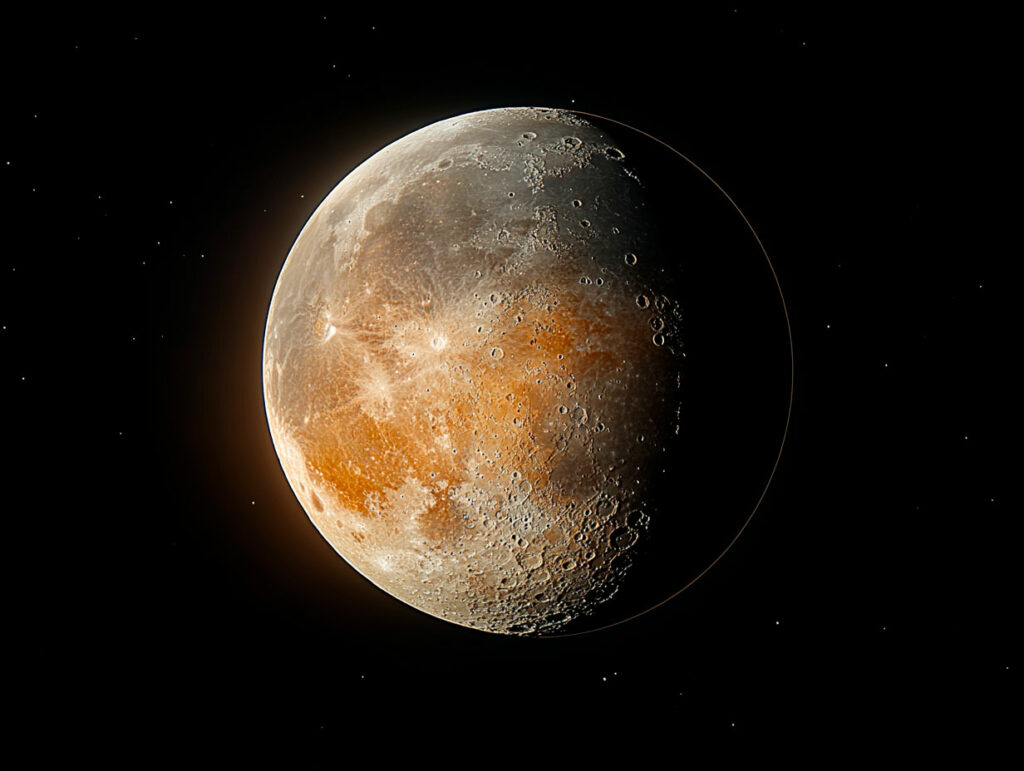
China and Russia are planning a nuclear power plant on the Moon for the ILRS by 2035, with Chang’e-8 in 2028 as a key milestone. Technical analysis and impacts.
China, in collaboration with Russia, is planning to build a nuclear power plant on the Moon to power the International Lunar Research Station (ILRS), a project aimed at establishing a permanent base by 2035. The Chang’e-8 mission, scheduled for 2028, will lay the foundations for this infrastructure by testing energy technologies, including nuclear reactors and large-scale solar panels. This initiative is part of China’s ambitions to become a major space power, with a human moon landing planned by 2030. Russia is contributing its expertise in space nuclear energy, which is considered superior to that of the United States. This project, involving 17 countries, marks a key milestone in lunar exploration, with significant technological, geopolitical, and environmental implications.
China’s space ambitions: heading for a permanent lunar base
China aims to become a dominant space power within the next decade. According to official statements, Beijing plans to land astronauts on the Moon by 2030 and establish a permanent lunar base by 2035. These goals are backed by a series of successful robotic missions, including Chang’e-3 (2013), China’s first mission to land a rover on the Moon, and Chang’e-5 (2020), which brought back 1.7 kg of lunar samples. These successes have bolstered the confidence of the China National Space Administration (CNSA) in its ability to compete with programs such as NASA’s Artemis, which aims to return humans to the Moon as early as December 2025.
The International Lunar Research Station (ILRS) project, co-led with Russia, is at the heart of this strategy. Scheduled to be operational by 2035, the ILRS will be located at the lunar south pole, a region rich in potential resources such as water in the form of ice, which is essential for the production of oxygen and fuel. The Chang’e-8 mission, planned for 2028, will play a key role in testing technologies such as 3D printing with lunar regolith and advanced energy systems. With an estimated space budget of €14 billion in 2024, China is investing heavily to compete with the United States, whose NASA budget stands at €23 billion.
This ambition is accompanied by an ambitious international plan, Project 555, which aims to involve 50 countries, 500 scientific institutions, and 5,000 foreign researchers. This collaborative framework, presented by Wu Weiren, aims to position the ILRS as a global scientific platform, contrasting with the more exclusive approach of the Artemis program.

The Chang’e-8 mission: foundation of the ILRS
The Chang’e-8 mission, scheduled for 2028, is a crucial step in the construction of the ILRS. This robotic mission, estimated to cost €1 billion, will carry approximately 2 tons of payload, including a lander, a lunar rover, and scientific instruments. It will test essential technologies such as the use of in-situ resources (ISRU), including water extraction and the production of building materials via 3D printing. For example, experiments will lead to the creation of regolith bricks with a mechanical strength of 10 MPa, sufficient for lunar structures.
Pei Zhaoyu, chief engineer of the mission, emphasized that Chang’e-8 will also evaluate the energy systems needed for a permanent base. This includes solar panels covering several hectares to generate up to 1 MW of electricity, as well as cables and pipes to distribute heat and energy across the lunar surface. These tests are critical, as the lunar south pole undergoes 14-day illumination cycles, making continuous energy solutions essential.
The mission builds on previous successes, such as Chang’e-6 (2024), which collected 2 kg of samples from the far side of the Moon. Data from these missions inform the selection of the ILRS site, targeting areas with access to water ice and optimal solar exposure. Approximately 30% of the craters at the south pole are believed to contain ice, according to CNSA studies, providing a strategic resource for the base’s autonomy.
A lunar nuclear power plant: a key energy solution
The announcement of a nuclear power plant on the Moon is a major innovation for the ILRS. Pei Zhaoyu said that this nuclear reactor would be the main source of energy, supplemented by solar panels. A 500 kW reactor, as envisaged by Roscosmos, could power a base consuming around 400 kW for life support systems, laboratories and rovers. Unlike solar panels, which are limited by periods of lunar darkness, a nuclear reactor provides a continuous power supply, which is essential for scientific and human operations.
Russia, through Roscosmos, brings recognized expertise in space nuclear energy. Wu Weiren noted that Russia surpasses the United States in this field, with precedents such as the RTGs (radioisotope thermoelectric generators) used on Soviet missions. The lunar reactor, scheduled for 2035, would be built by robots, as lunar environments, with temperatures ranging from -173°C to +127°C, require resistant materials such as zirconium or titanium alloys, which are still under development.
The cost of this reactor is estimated at €2-3 billion, with major technical challenges, such as cooling in the lunar vacuum, requiring radiators measuring 10 m² per 100 kW. In comparison, NASA is exploring similar reactors through the Fission Surface Power project, aiming for 40 kW by 2030, but with a less ambitious timetable than the ILRS.
Sino-Russian collaboration and Russian advantage
Cooperation between the CNSA and Roscosmos is based on a memorandum signed in 2021. Wu Weiren highlighted Russia’s advantage in space nuclear reactors, a field where Russia has a head start thanks to decades of experience. For example, the Soviet Topaz program developed 10 kW reactors for satellites in the 1980s. This expertise is crucial to overcoming lunar constraints, such as the lack of an atmosphere for cooling.
Russia, which has been facing Western sanctions since 2022, benefits from Chinese technological support. In return, China gains access to Russian expertise, reducing costs and risks. According to estimates, around 60% of the reactor components will be manufactured in China, with final assembly carried out by Russian robots. This collaboration strengthens the ILRS in the face of the Artemis program, but it also reflects a geopolitical polarization with implications for access to lunar resources.

Technological and geopolitical consequences
The construction of a lunar nuclear power plant will have major repercussions. Technologically, it will validate energy systems for extreme environments, applicable to other celestial bodies such as Mars, where China aims to land a human mission by 2033. A lunar reactor could reduce operating costs by 50% compared to solar solutions, according to studies by Roscosmos.
Geopolitically, the ILRS positions China and Russia as leaders in lunar exploration, challenging US supremacy. Project 555 aims to expand this coalition, but the likely exclusion of the US, due to tensions with the CNSA, could fragment space cooperation. Approximately 20% of lunar resources, such as helium-3, could be exploited by the ILRS, strengthening Sino-Russian influence.
Environmentally, the risk of radioactive contamination is low, as the reactor would be sealed and located far from inhabited areas. However, a launch failure, with a 1% probability according to models, could release isotopes such as plutonium-238, raising ethical questions.
Prospects for lunar exploration
The ILRS is redefining lunar exploration by integrating advanced technologies such as nuclear energy and ISRU. By 2035, the base could accommodate 10 to 20 astronauts for six-month missions, at an estimated annual cost of €5 billion. These developments will stimulate the space economy, which is projected to be worth €1 trillion by 2040.
The Sino-Russian project, with its 17 current partners, contrasts with Artemis, which brings together 40 countries. This competition could accelerate progress, but risks dividing scientific efforts. The ILRS could also pave the way for the exploitation of helium-3, a resource for nuclear fusion, estimated at 1 million tons on the Moon.
War Wings Daily is an independant magazine.